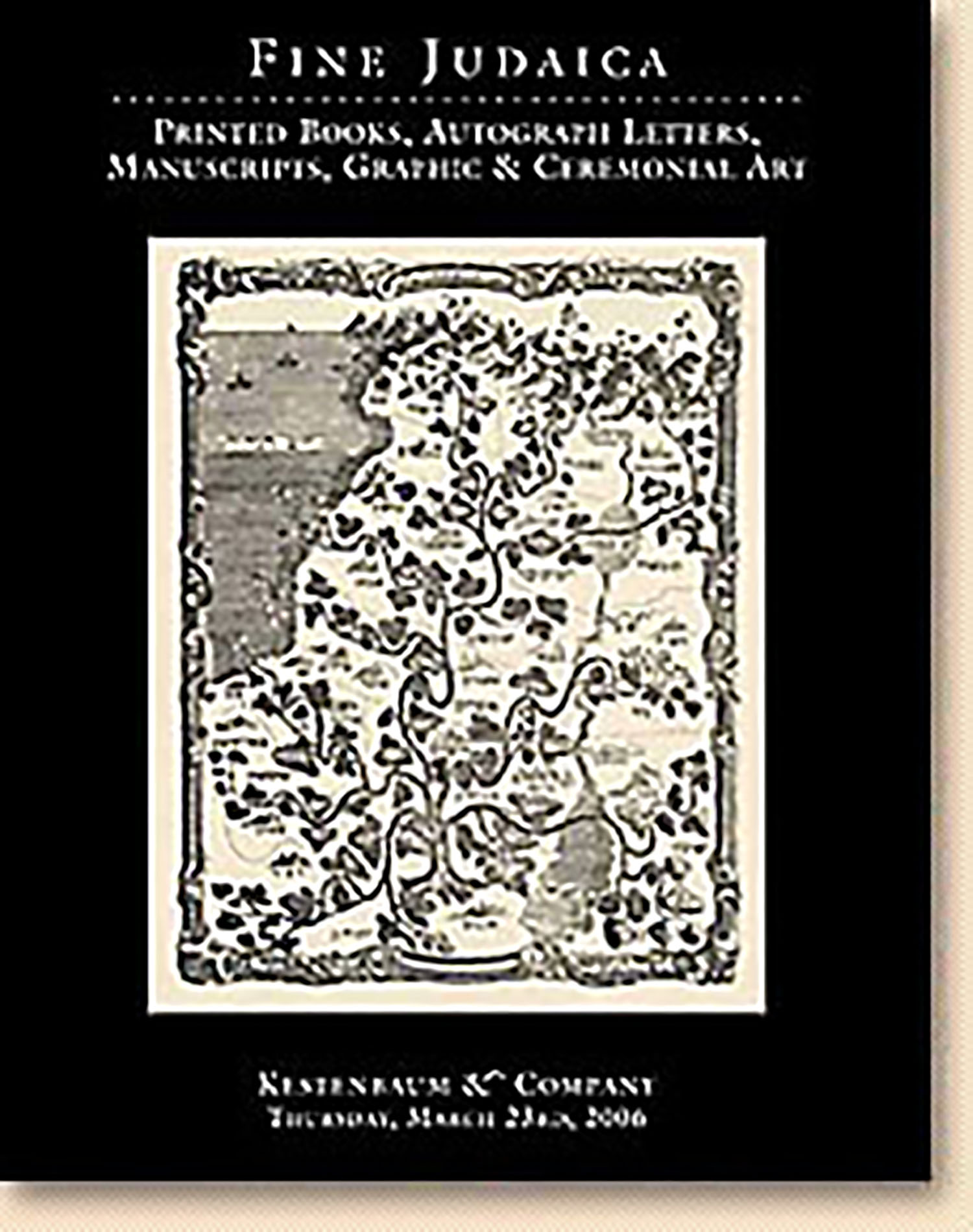She’eloth u-Teshuvoth Peri Etz hayyim [“Fruit of the Tree of Life”: Journal of legal responsa produced by the scholars of the Midrash Etz Hayyim of Amsterdam]

AUCTION 32 |
Thursday, March 23rd,
2006 at 1:00
Fine Judaica: Printed Books, Autographed Letters, Manuscripts, Graphics and Ceremonial Art
Lot 91
(DUTCH JUDAICA).
She’eloth u-Teshuvoth Peri Etz hayyim [“Fruit of the Tree of Life”: Journal of legal responsa produced by the scholars of the Midrash Etz Hayyim of Amsterdam]
Amsterdam: Joseph ben Solomon Proops 1782
Est: $4,000 - $6,000
PRICE REALIZED $12,000
THE FIRST TORAH JOURNAL
Between the years 1691-1808 nearly 1000 responsa by students of the Amsterdam rabbinical seminary Etz Hayyim were published in an ongoing series of 13 volumes. Our volume is the ninth in this series. While many of the themes dealt with in our volume - especially as concerns monetary and matrimonial issues, and the kashering of vessels and the rinsing and salting of meat - are commonplace, others are of a more exotic variety. Thus, chapter 27 deals with what would be termed today an “environmental issue” of smoke pollution (see Bava Bathra 23a; Maimonides, Hil. Shechenim 11:4). Chapter 6 tackles which blessing to recite before eating a certain berry-like form of vegetation, “branbozas.” Chapter 33 discusses whether a kohen whose voice has been impaired, and who is physically incapable of raising his voice aloud, may yet pronounce the priestly benediction. Another responsum addresses the kashruth of “cochineal” powder, a red, sour flavoring, used in drinks and sweets, obtained from the insect by that name (ff.117r.-119r.).
Of interest is the fact mentioned on the title that the final decision concerning all of the responsa remains for Haham David Cohen d’Azevedo. As supreme authority, he may concur or differ with the findings of the students. David d’Azevedo served as Haham from 1781 until his death in 1792, at which time he was succeeded by his son Daniel. See M.H. Gans, Memorbook (1977), p. 197.
Besides the requisite responsa for the years 1782-5, our volume contains earlier responsa from the following years: 1748, 1750, 1755, 1760-1, 1769, 1771, as well as later ones from the years 1786-7.
Because of the integrity of the volume, bespoken by its contemporary binding, it is difficult to conceive that anyone would have randomly collected these responsa between two covers. Rather, it is conceivable that the present volume was intended as a a sort of reader’s digest of responsa issued by the Seminary during the second half of the eighteeenth century.
